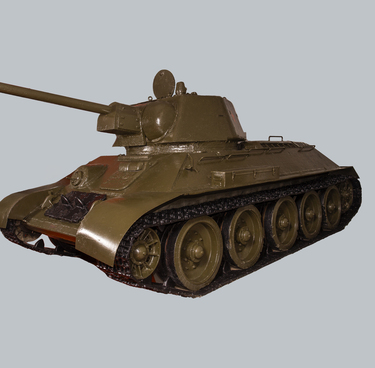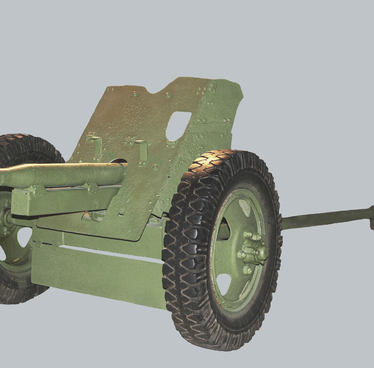The FOG-2 static flame fougasse (flamethrower) was a single-use weapon. It is a cylinder with a flamethrower gun. A combustible mixture is ejected through it under the pressure of powder gasses and is then ignited.
In the upper part there is a filling port and two handles on the sides. When filling the flamethrower, a powder charge was placed in the charging cup, and an incendiary bomb was placed on top of it. An electric fuse or a mechanical igniter was arranged in it. The flamethrower was triggered by a trip-wire or a pressure-type igniter was employed. When the fuse or igniter was triggered, the incendiary bomb lit up, which ignited the powder charge.
The flame produced by the ignited bomb was expelled through the ignition hole. The gasses that were formed during the combustion of the powder charge were squeezed out by the flaming mixture through the siphon pipe to the membrane. Due to high pressure, it was cut off, and the flaming mixture was ejected from the nozzle. Flying out of it, it ignited from the flame of the incendiary bomb and flew at the target as a jet of fire.
Flamethrowers were developed in the USSR in the 1920s and 1930s. By the time of the Second World War, it was possible to design various types of this weapon, for instance, backpack, flame fougasse and tank flamethrowers.
The FOG-2 flamethrower entered service at the end of 1942, it was a modernized version of the FOG-1 model of 1941. The design was simplified, and its size was reduced. Based on the FOG-1, the Abwehrflammenwerfer 42 high-explosive flamethrower was developed and adopted in Germany.
Initially, the flamethrowers used a “liquid flaming mixture”, which consisted of 25% gasoline, 25% kerosene and 50% engine oil; the projected stream could reach 30 meters. In 1942, the BGS incendiary liquid (benzene, solvent) was developed. When gasoline was added with the OP-2 thickening agent, the projected stream was increased to 140 meters.
In total, about 15,000 FOG-2 flamethrowers were released before the end of the war. In the post-war period, new models of fougasse flamethrowers were developed until the 1970s when the most effective rocket-propelled flamethrowers were adopted.


